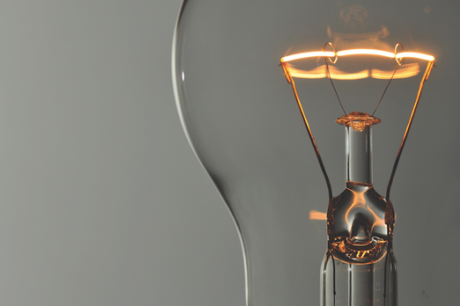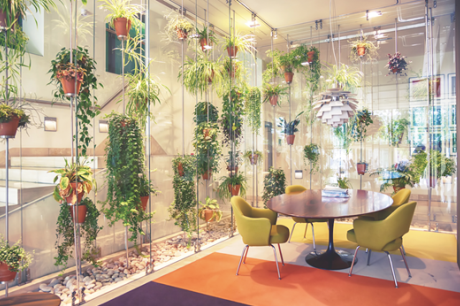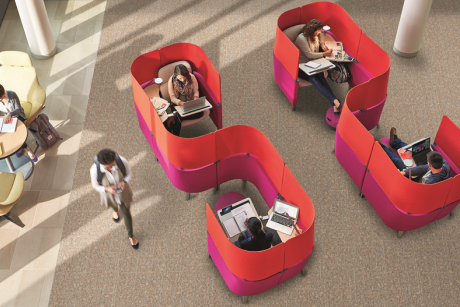
Design is everywhere around us
We seem to live in a world of perpetual upgrade, like Olympic athletes striving to gain a fraction more speed, a performance edge that makes the difference between a gold medal and anonymity. And just as in many Olympic events, ‘artistic impression’ is an important part of performance; so some may see ‘design’ as having a similar relationship to performance in products and processes. As we will discuss, design is much more fundamental than that. All too often we only think (if we think at all) about design in terms of the visible surface of objects. Something is beautifully or well designed if we like its aesthetics. And of course liking is very subjective.
As a recent report from Invision put it: ‘Design is changing the way we work… when an organisation applies the principles of design to its strategies and structures, it’s making a conscious decision to innovate at all levels.’

-
The global predominance of Mercedes in taxis isn’t just because drivers want their passengers to feel special. And it certainly isn’t down to upfront cost. It’s because of legendary reliability and durability (there are examples of some with over 1,000,000 kilometres on the clock), which impact on the lifetime value.
-
But Total Cost of Ownership applies to more than just high value goods. Leitz commissioned research through Vocatus, a pan European consultancy to look at the actual cost of ownership of everyday office items among some major companies like Bosch and IBM, together with laboratory torture tests of products to stimulate lifetime usage.
-
The results are startling. Over the course of a year, the average stapler is being used 3,000 times the average hole puncher 2,000 times, the average Lever Arch File 2,500 times.
-
Failure rates of resellers’ own-brand products (jamming, breakage, paper mangled etc.) compared to Leitz were double for staplers and Lever Arch Files, triple for hole punches, and a staggering six-fold for laminators.
- In terms of person time, materials, replacement costs etc, the lifetime costs of ownership of the non-Leitz brand stapler, hole punch and LAF, were €197, €122 and €146 respectively.
- When seen in the context of a unit cost, the multiplier effect is enormous. Suddenly, you’re not buying a cheap €5 stapler – you’re buying a €200 stapler. You just don’t realise it.

-
Appearance is an intangible. But it’s an important intangible. At a personal level, whether we like it or not, people make judgements about us, based on our appearance. According to 2011 research by Harvard Medical School, people assess your competence and trustworthiness in a quarter of a second based solely on how you look.
-
Some aspects of this we can’t do anything about. But personal organisations is something that is within everyone’s control. Tom Peters wrote his influential piece ‘The Brand Called You’ nearly 20 years ago in1997 – ‘Regardless of age, regardless of position, regardless of business we happen to be in, all of us need to understand the importance of branding. We are CEOs of our own companies: Me Inc. To be in business today, our most important job is to be head marketer for the brand called You.’
-
Branding lies in consistency. It’s expressed in the stationery you use. Do you pull out a battered notebook that a child would take to school, or a colour co-ordinated, more premium book that suggests that the thoughts you capture are actually worth something?
Design and Office Equipment Efficiencies
-
Despite the claims of Silicon Valley et al. the paperless office is still a distant prospect for the vast majority of businesses. While the use of paper is undoubtedly falling, it is still a huge market. Although decline will continue, there is a long way to go. Ironically many digital innovations like mobile printing apps are actually adding to consumption for some of us.
-
The Paperless Project reports that the average office worker in the USA and Europe still uses 10,000 sheets of copy paper every year. It costs about $25,000 to fill a four-drawer filing cabinet and over $2,100 per year to maintain it according to Gartner Group, Coopers & Lybrand and EY.
-
The average office spends $20 in labour costs to file each document, $120 in labour costs searching for each misfiled document, loses one out of every 20 documents and spends 25 hours recreating each lost document according to PwC.
-
Shouldn’t we therefore bring the same demands we make on phones and laptops to hole punches, to letter trays, to file dividers, to laminators? Paper management is hugely important, but companies don’t seem to bother about it as much as they should do. Office designers assume that paper is dead (it clearly isn’t) and make little allowances for its continuing use.
Design and Well-being in the Office
-
As office design becomes more streamlined and minimalist there are hidden risks. What might seem like clutter that detracts from the overall design might actually be helping people feel better about their environment.
-
Take plants, for example; a study in the Journal of Experimental Psychology recently compared the impact of the trend to ‘lean’ (bare and functional) offices on subjective perceptions of air quality, concentration, and workplace satisfaction as well as objective measures of productivity and showed that all increased when offices were by, or near green areas. This was a feature of many offices in the past has often been discarded for apparently adding visual clutter.
-
These findings were endorsed by a study performed by Exeter University that found people in ‘enriched spaces’ that include plants and pictures were 17% more productive that those in ‘lean spaces’. Those in ‘empowered spaces’ – where people were allowed to design their own spaces, were 32% more productive
The Role of Design in Projecting the Company Brand
- When one office looked pretty much like another, discerning differences was much more difficult. Now more and more companies recognize space as one of the most powerful vehicles for communicating a brand – and, by extension, building a business.
- The extent to which this happens is quite varied. A recent report from Steelcase shows that across the globe, although 70% of companies have logos and advertising through the workspaces, a sizeable minority are still relatively anonymous: 40% don’t reflect the brand colour palette in the design of furnishings over 60% make no reference to the history of the company.
- In an article on internal branding in the Harvard Business Review, the design of premises was identified as one of the key components of communicating the brand: ‘by incorporating the brand vision into these employee touchpoints, companies, over time inculcate the vision into the employee experience to the extent that on-brand behavior becomes instinctive’.
How Design Leads and Reflects Changing Work Patterns
-
10 years ago, the challenge for companies in designing offices were very different from those of today and tomorrow. If someone was going to be tethered to a desk for an entire morning, then the design requirements for sustained comfort in seating were clear. With the need to give more and more people access to technology, the position of cabling was as important as the position of people.
-
The work environment has changed and the attitudes of people who make up the ‘office’ workforce have changed at the same time. Key questions today are ‘what is an office’, what is an office for?’ And if they can answer these questions, how can we best design it to meet our needs.
-
The customer in this case is the internal one, translated into an increasingly demanding workforce with higher standards. For some people the ideal will continue to be a centralised workplace. For others it will be more of a social place, where employees can come together to meet informally to exchange ideas and then leave.
-
It’s no longer simply about going to a building where you do your work; it’s about enjoying the space you work in, it’s about being in a space that helps you achieve more. As one of Wework’s Senior designers put it in a Creator interview, ‘You feel like you’re actually helping people love coming into work every day.’
'Design centric’companies
- Most businesses today talk about designing a strong User Experience (UX) for websites, but this design approach has expanded to the design of Customer Experiences (CX) embracing an entire process on and offline.
- One role that is gaining ground and top-level endorsement is that of Chief Design Officer. In the last few years Pepsico, Hyundai and Philips have all created this post at board level. The EVP of Design at Nokia reports directly to the CEO, while Samsung took it a step further by making its former creative head the CEO.
- This ‘design-centric’ methodology goes beyond efficiency to delivering superior performance, and as a result, creates happier, more fulfilled, better served customers.Moreover, there’s empirical evidence that this type of approach is good for business. In 2014 the Design Management Institute compared the fortunes of
‘design centric companies’ with the S&P Index and found a 200%+ gap.